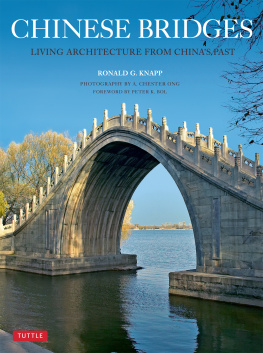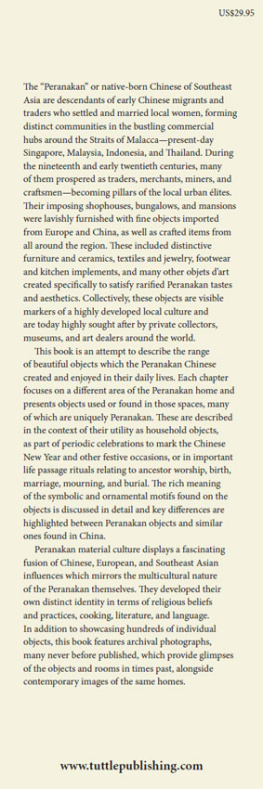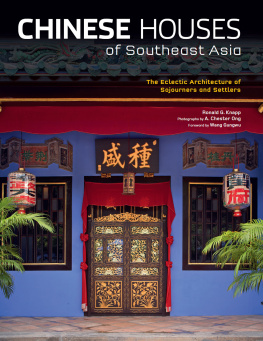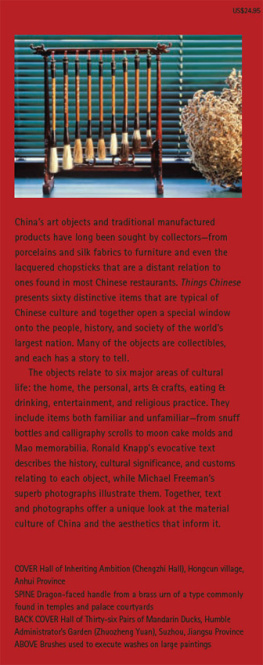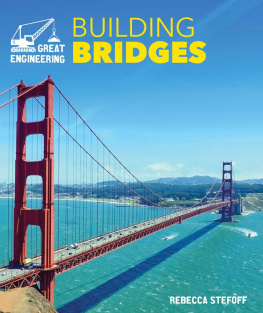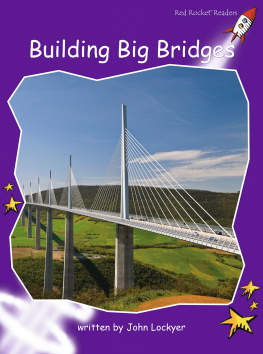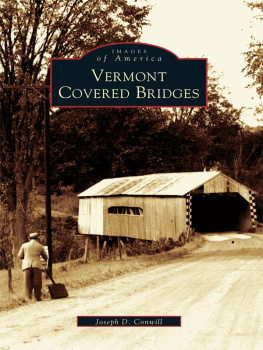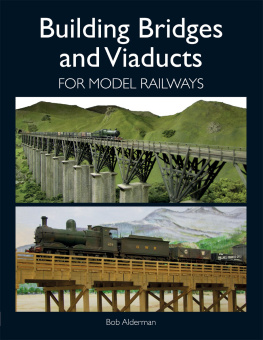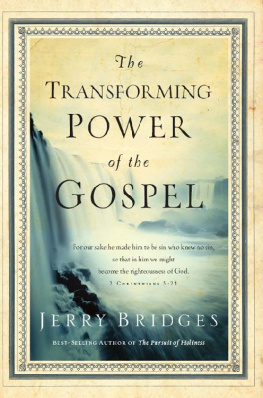ARCHITECTURE OVER WATER
Unlike palaces and templeseven housesthat are noticeable because of their faades and profiles, bridges, on the other hand, are frequently overlooked as architectural artifacts. Born of necessity to span streams, valleys, and gorges, bridges are literally underfoot and often inconspicuous. Yet, while sometimes merely utilitarian and unnoticed, many of Chinas bridges are indeed dramatic, even majestic and daring architectural structures that epitomize the refined use of materials to span space. Joseph Needham, the great scholar of Chinese science and technology, asserted that Chinas bridges combine the rational with the romantic, the workaday with the ethereal (1971: 4(3) 145). Unlike a building with walls and a roof wherein the structure is a means to an end, however, the structure of any bridge is as much a means as an end. In addition, a great many traditional Chinese bridges actually had buildings with walls and a roof built atop them, hence the appropriateness of the phrase architecture over water. Indeed, Chinas bridges are as much about architecture as they are about engineering in that they combine an inner logic and sense of aesthetics that is distinctive, while giving evidence of a sophisticated empirical approach to construction that equals practices and ingenuity known in the West. Bridge building in China undeniably is much more than a mere footnote in the chronicle of Chinas contributions to world architecture and engineering.
Bridges sometimes are accidental configurationsa mere log or bamboo thrown over a channel as well as stones deposited by flood across the breadth of a streambut more often they represent purposeful efforts to tease strength from materials in order to overcome a gap in space. Until recent centuries, bridge building anywhere in the world was a more practical and empirical art than engineering science. Primitive responses using common materials such as wood, stone, and rope of many types progressed over time into more complex solutions using exactly the same materials. Long before science and mathematics were consciously employed to design bridges, local craftsmen experimented with easily accessible materials nearby to solve their bridging needs. Yet, whatever the level of sophistication of the builder or designer, each was forced to consider fundamental and common realities that tested the nature and limits of various forms of matter. In addition, as elsewhere in the world, opportunities emerged in China for exploring and ultimately devising innovative methods of prevailing over old problems with art and grace using a rich range of technical solutions, many of which actually predated similar advances in the West.

Slender logs held together by iron staples and laid across a shallow running stream serve here not only as a temporary bridge but also as a convenient place to wash vegetables. Sanjiang region, Guangxi Zhuang Autonomous Region.
The Basics of Bridges
It will be useful here to spell out some of the basic terms used in later discussions since bridge builders in China, like those anywhere in the world and whatever their sophistication, encountered common forms of matter while searching for, perhaps even stumbling upon, inspired solutions. Bridges are differentiated in a number of ways, namely in terms of their materials, structure, and purpose.
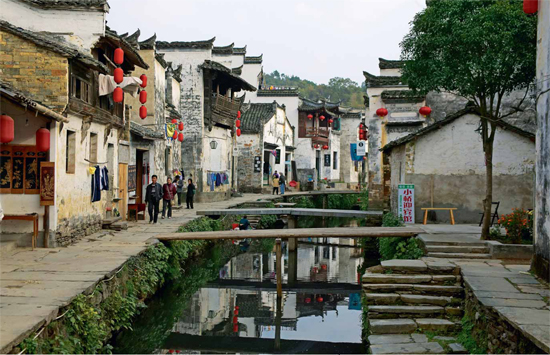
Simple bridges made of stone beams are ubiquitous in rural China, such as this stream going through Likeng village, Wuyuan county, Jiangxi. Because stone beams tend to bend due to tension, it is often necessary to support them with midstream piers to increase the distance crossed.Where fracturing occurs, traditional stone slabs are sometimes replaced by prestressed concrete slabs.
Traditionally, there were only three types of building materialsresilient wood, durable stone, and flexible ropesand three types of bridge structuresbeam, arch, and suspension. Cement, iron, and steel, among other later materials, came to offer new solutions to contemporary builders even as they continued to work within the traditional range of structural types and tried-and-true old material types. For the most part, the materials used to build bridges in the past were those that were readily at hand, whether they were timber, stone, or twisted ropes made of bamboo or vines. Yet, as many of the examples shown later in this book reveal, treasured hardwoods, marble, and pliant bamboo somewhat surprisingly came to be used in China in locations far removed from where these materials were commonly found.
The overall configuration of any bridge can be subdivided into its substructure, comprising abutments, piers, and foundations, as well as a super-structure that rises abovebeam, arch, suspension, and truss, in addition to any number of combinations of these. Bridge structures differ primarily in the ways in which they bear their own weight, or dead load, as well as the live loadthe weight of people, animals, vehicles, even snow. Forces and stressestension, compression, torsion, and shearall impact how successful is the marriage of materials and form in the design and construction of any bridge. In some bridges, these forces act individually, but in most they act in combination, a subject that today is resolved by modeling, but in history was addressed by trial-and-error experimentation.
Tension and compression are opposite forces; the first tends to stretch or elongate something while the second pushes outward. In comparison, torsion is a twisting force, either in one direction while the other end is motionless or twisting in opposite directions. Beside dead and live loads, the force of the wind, rushing water, and earthquakes can all provide forces that create instability or, in fact, lead to the destruction of any bridge. Arches transfer most of the load they carry diagonallyrather than verticallyto the abutments, pushing outward against these supports rather than transferring their weight downward. In functioning this way, an arch is said to be in a state of compression, with its component parts squeezing outward.
Beams simply rest, with only gravity operating to transfer the weight of the beam and what it carries vertically to the supports on both ends, the abutments, and any midway piers placed to offer supplementary support. Because beams tend to bend at the middle due to downward pull, or tension, perhaps even to the point of breaking, there are definite limits to the length of single beams of different materials.
It is sometimes possible to overcome these limits by linking a series of short beams on intervening supporting piers or by projecting the beams by using cantilevering principles. Trusses, which are a form of complex beams, developed in the West in the nineteenth century, were not a solution experimented with by early Chinese bridge builders.
Since stone is very strong in compression, it is naturally the material of choice for building arch bridges. Sometimes called inverted arches, suspension structures are said to be in a state of tension since they pull inward and away from their anchorages. Used in ingenious combinations, beams, arches, and suspended cables can be employed simultaneously to support a bridge. It is all too easy to overbuild, to waste materials, money, and effort.

Step-on block bridges, where each stone is carved into a similar shape and lined up, are sometimes used to cross shallow streams, as seen here in Shouning county, Fujian.

